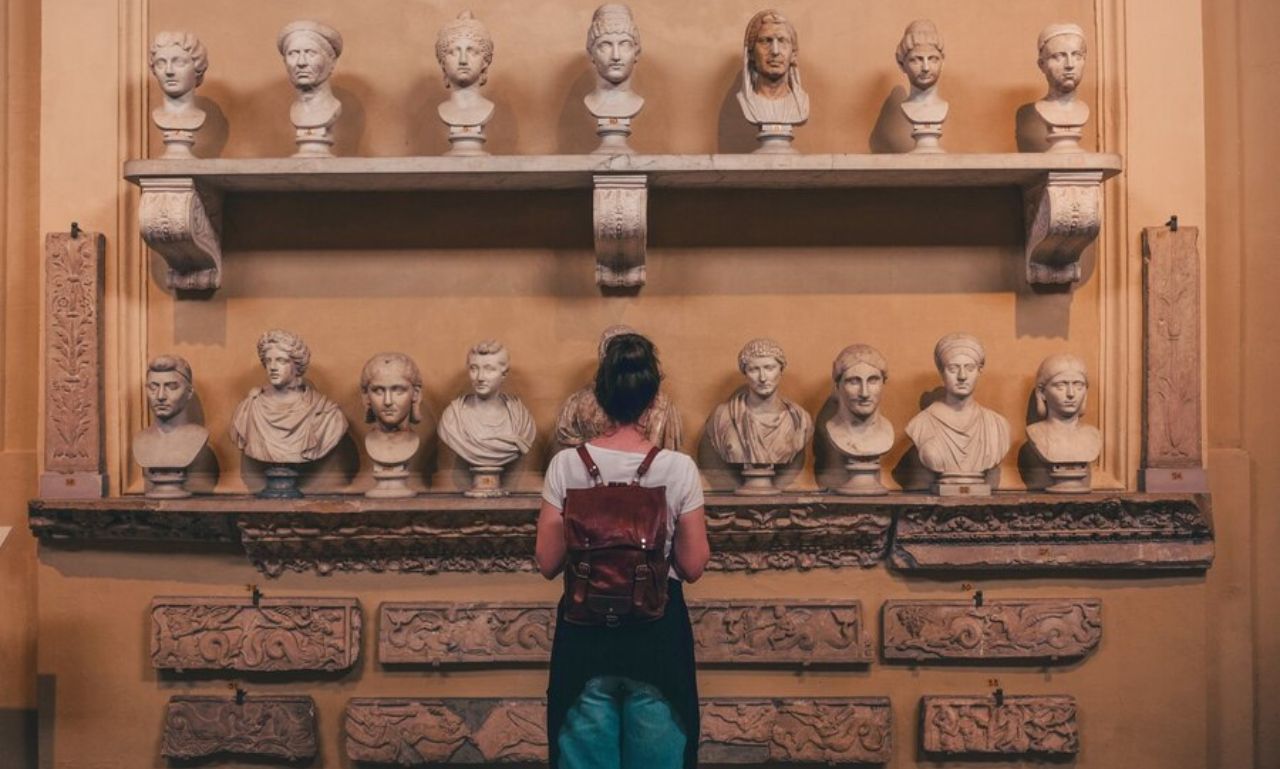Ancient art is a captivating window into the past, revealing the beliefs, traditions, and everyday lives of early civilizations. From the cave paintings of prehistoric societies to the grandeur of Egyptian pyramids and Greek sculptures, ancient artz reflects the creativity and innovation of humanity’s earliest cultures.
What Is Ancient Artz?
Ancient artz encompasses the visual arts created by civilizations from prehistoric times to the early Middle Ages. It includes a variety of mediums, such as sculpture, painting, pottery, and architecture. These artworks often served religious, political, or social purposes, making them an integral part of historical storytelling.
Key Characteristics:
- Symbolism: Ancient art is rich in symbols, often depicting gods, rulers, and mythical themes.
- Functionality: Many pieces were created for practical use, such as pottery or tools.
- Cultural Representation: Art styles and techniques varied significantly between regions, reflecting their unique cultures.
The Origins of Ancient Artz
The earliest forms of art emerged in prehistoric times, with cave paintings, carvings, and rudimentary sculptures.
Prehistoric Art Highlights:
- Cave Paintings: Found in locations like Lascaux, France, these paintings depict animals, hunting scenes, and abstract symbols.
- Venus Figurines: Small carvings of women, such as the Venus of Willendorf, representing fertility and abundance.
- Petroglyphs: Rock carvings etched by early humans, offering insights into their daily lives and spiritual beliefs.
The Flourishing of Ancient Civilizations
As societies developed, so did their art forms. Let’s explore how ancient art flourished in some of history’s most influential civilizations.
1. Mesopotamian Art
Mesopotamia, the “cradle of civilization,” gave rise to art that celebrated religion and governance.
Notable Features:
- Ziggurats: Monumental structures dedicated to gods.
- Cylinder Seals: Engraved stones used for record-keeping and personal identification.
- Sculptures: Depictions of rulers and deities, emphasizing power and divinity.
2. Egyptian Art
Egyptian art is renowned for its precision, symbolism, and alignment with religious beliefs.
Key Highlights:
- Pyramids and Tomb Art: Created to honor the dead and ensure their afterlife journey.
- Hieroglyphics: Artistic script combining language and visuals.
- Sculptures: Colossal statues like the Great Sphinx and intricate busts such as Nefertiti.
3. Greek Art
Greek art emphasized realism, proportion, and humanism, laying the foundation for Western art traditions.
Important Contributions:
- Pottery: Decorated with mythological scenes and geometric patterns.
- Sculptures: Masterpieces like the Discobolus (Discus Thrower) and Venus de Milo.
- Architecture: Iconic structures such as the Parthenon, featuring Doric, Ionic, and Corinthian columns.
4. Roman Art
Roman art adopted Greek influences while adding its flair for grandeur and practicality.
Key Features:
- Realism in Portraits: Detailed sculptures capturing the individuality of emperors and citizens.
- Mosaics: Decorative art used in homes and public spaces.
- Public Monuments: Triumphal arches and columns commemorating military victories.
5. Indian Art
Indian art is deeply intertwined with spiritual and philosophical traditions.
Cultural Highlights:
- Buddhist Stupas: Architectural wonders symbolizing enlightenment.
- Sculptures of Deities: Intricate carvings depicting gods like Shiva, Vishnu, and Durga.
- Cave Paintings: Found in Ajanta and Ellora, showcasing religious themes and daily life.
6. Chinese Art
Chinese art reflects a harmonious relationship between humans, nature, and spirituality.
Noteworthy Contributions:
- Calligraphy and Ink Paintings: Elegant art forms emphasizing balance and flow.
- Terracotta Army: A vast collection of life-sized statues guarding Emperor Qin Shi Huang’s tomb.
- Porcelain: Delicately crafted ceramics renowned worldwide.
7. Pre-Columbian Art
The Americas produced remarkable art before European contact, reflecting the ingenuity of its cultures.
Highlights:
- Mayan Pyramids: Architectural feats aligned with astronomical events.
- Aztec Stone Carvings: Intricate symbols and depictions of gods.
- Incan Goldwork: Exquisite metalwork representing the sun god, Inti.
Techniques and Materials in Ancient Artz
The diversity of ancient artz lies not only in styles but also in the materials and techniques used.
1. Stone Carving:
- Used for sculptures, monuments, and architectural details.
2. Pottery:
- Created using clay and decorated with paint, carvings, or glazes.
3. Metalwork:
- Techniques like casting and engraving were used for tools, jewelry, and statues.
4. Painting:
- Frescoes, murals, and cave paintings are made with natural pigments.
5. Textiles:
- Intricately woven fabrics showcasing cultural patterns and symbols.
The Role of Ancient Artz in Society
Art was not merely decorative but served vital roles in ancient societies.
1. Religious Significance:
- Art often depicted gods and rituals, playing a central role in worship.
2. Political Propaganda:
- Rulers used art to assert their power and legacy, as seen in statues and monuments.
3. Storytelling:
- Art preserved historical events, myths, and cultural narratives.
4. Daily Utility:
- Pottery, tools, and textiles combined functionality with artistic expression.
Lessons from Ancient Artz for Modern Creatives
Ancient artz continues to inspire artists and designers today.
1. Embrace Symbolism:
- Incorporate meaningful symbols into your creations for deeper impact.
2. Experiment with Materials:
- Explore unconventional materials to push creative boundaries.
3. Balance Function and Beauty:
- Create pieces that are both practical and visually appealing.
4. Honor Cultural Heritage:
- Draw inspiration from your roots while innovating for the future.
FAQs
What is ancient artz?
Ancient artz refers to the visual arts created by early civilizations, including sculpture, painting, pottery, and architecture.
Why is ancient art significant?
Ancient art provides insights into the beliefs, traditions, and daily lives of historical societies.
What are some famous ancient artworks?
Examples include the Great Pyramids of Egypt, the Terracotta Army of China, and the Venus de Milo from Greece.
How did ancient artists create their works?
Ancient artists used techniques like carving, casting, and painting, often with natural materials such as stone, clay, and pigments.
What can we learn from ancient artz?
Ancient art teaches us about cultural values, symbolism, and the evolution of human creativity.
Conclusion
The world of ancient artz is a testament to humanity’s enduring creativity and quest for expression. From the intricate carvings of Mesopotamia to the vibrant frescoes of India, these timeless masterpieces offer a glimpse into the ingenuity of early civilizations.
As we study and celebrate ancient art, we not only preserve history but also draw inspiration to shape the future of art and culture. Let the legacy of ancient artz remind us of the power of creativity in connecting generations and enriching lives.











Can you be more specific about the content of your article? After reading it, I still have some doubts. Hope you can help me.
3j67gq
Thank you for your sharing. I am worried that I lack creative ideas. It is your article that makes me full of hope. Thank you. But, I have a question, can you help me?
tg247u
Thank you for your sharing. I am worried that I lack creative ideas. It is your article that makes me full of hope. Thank you. But, I have a question, can you help me?
Thanks for sharing. I read many of your blog posts, cool, your blog is very good.